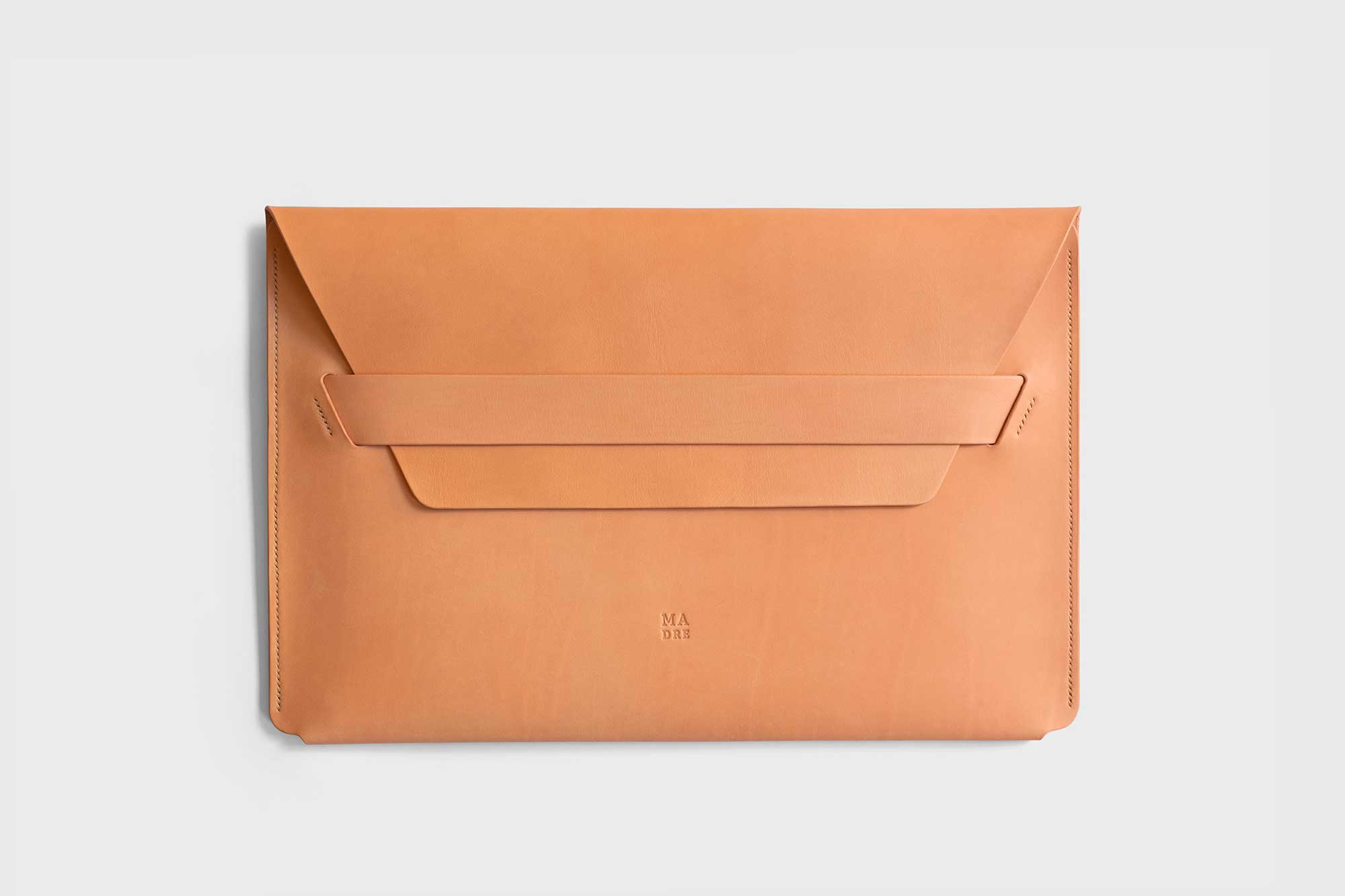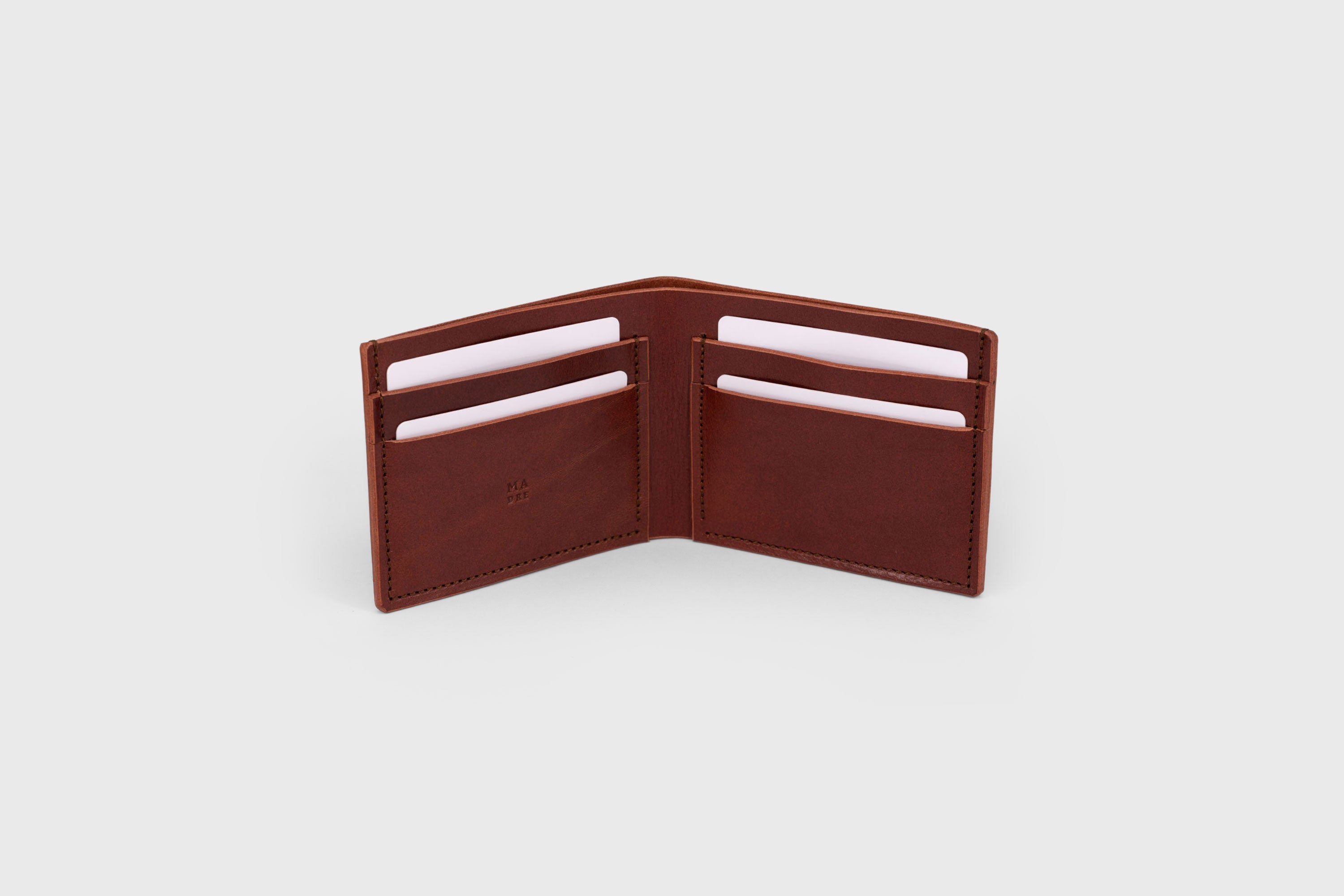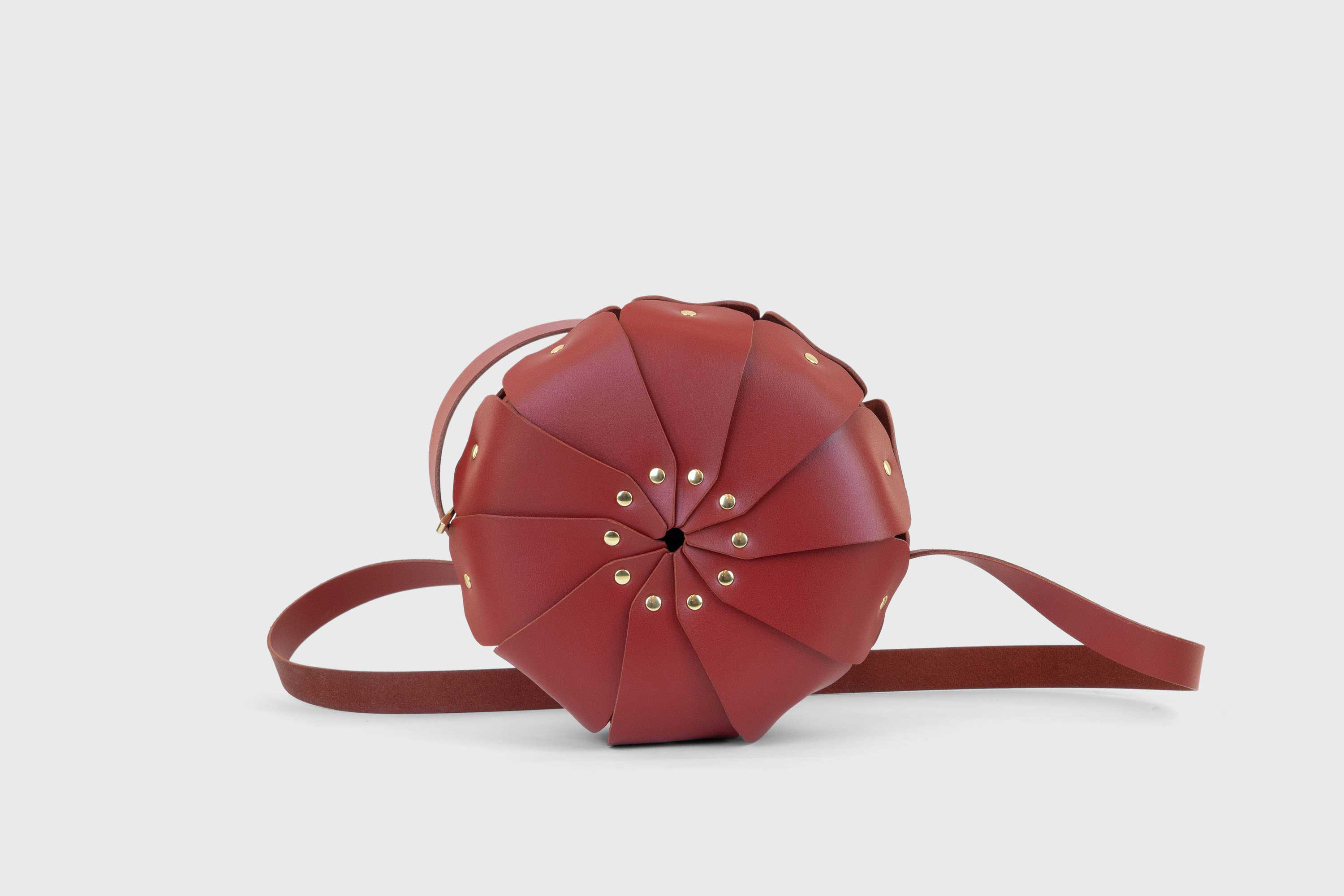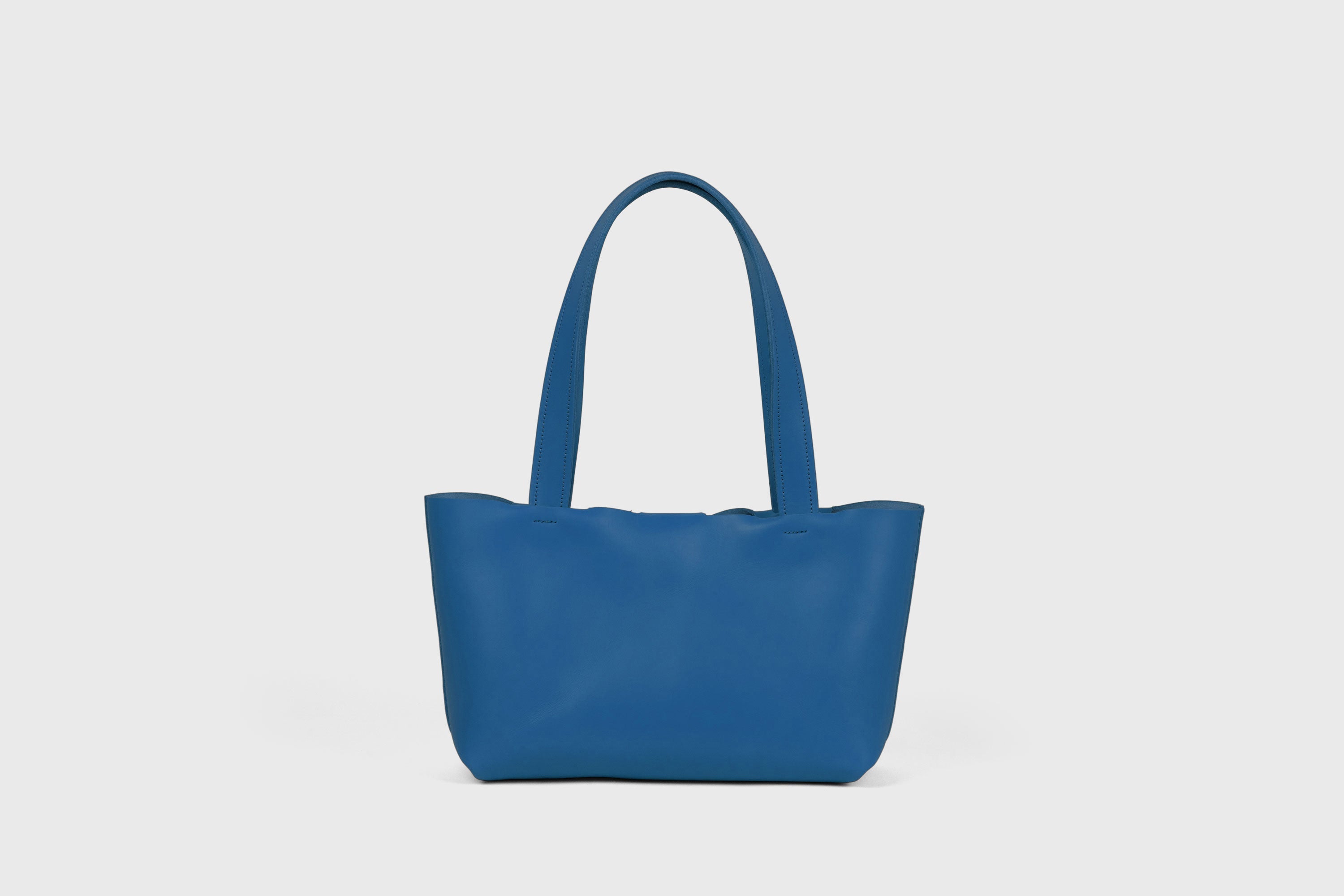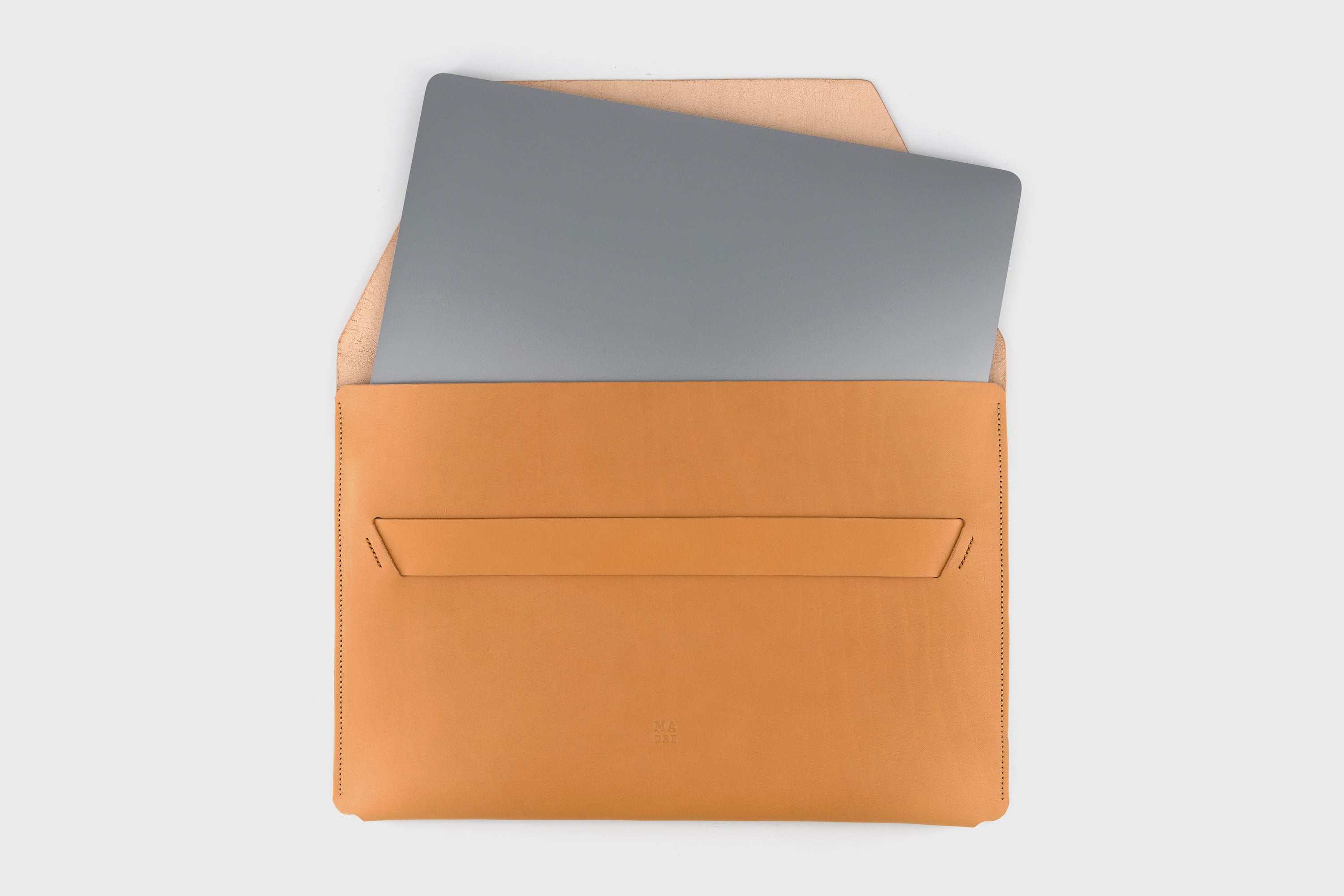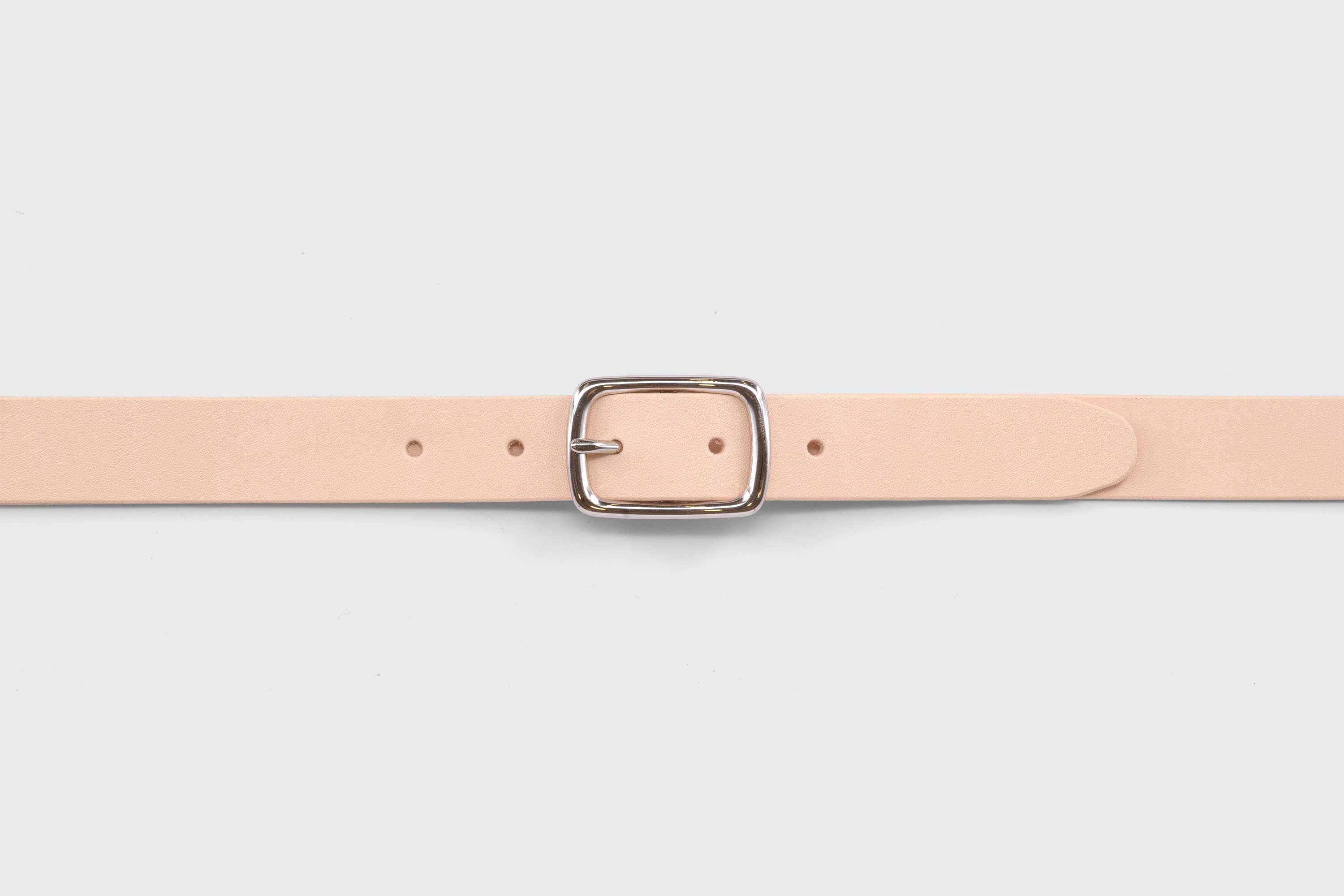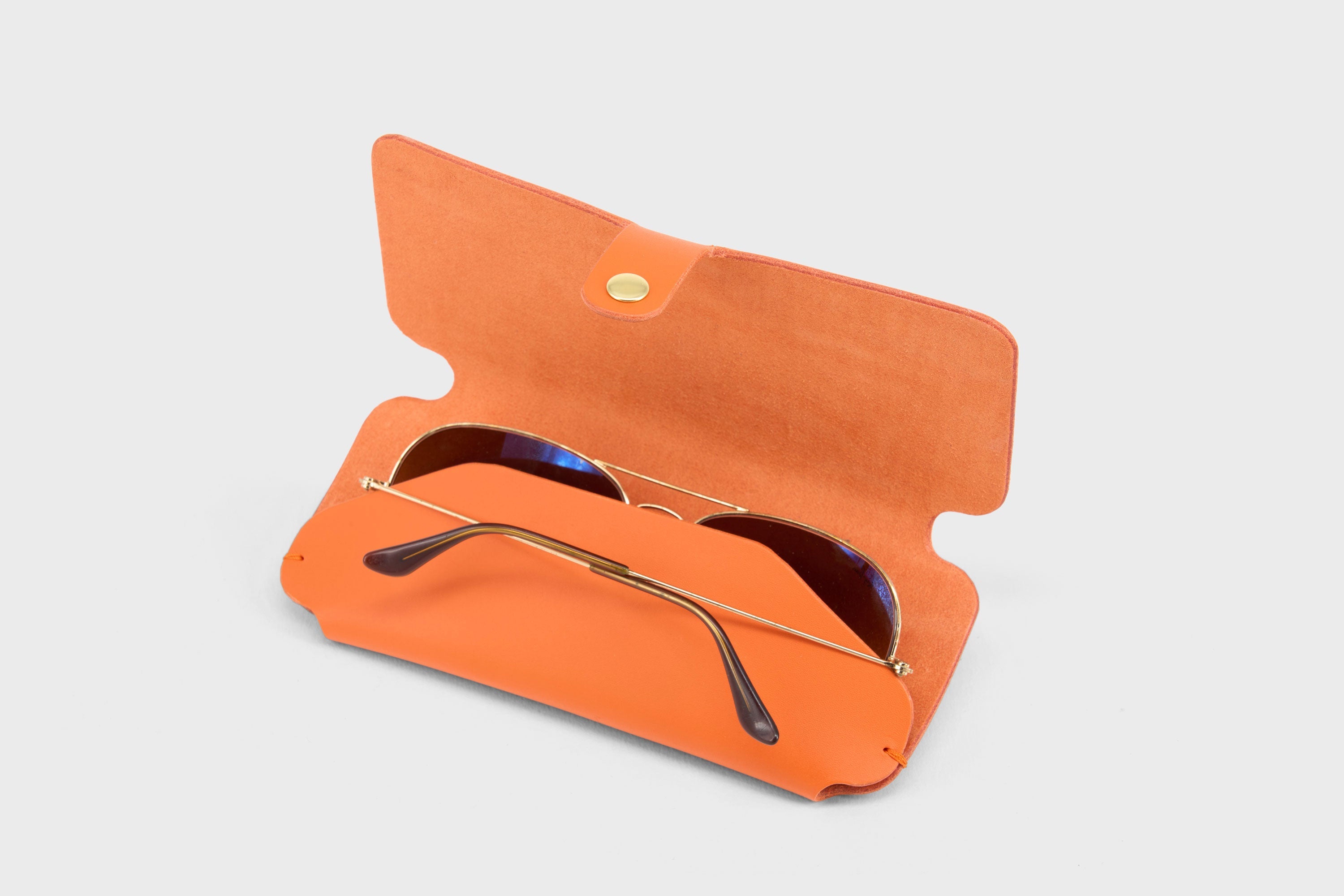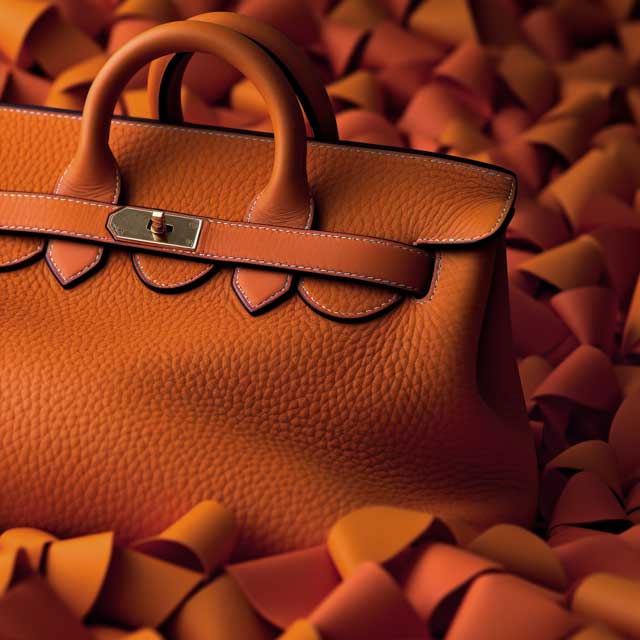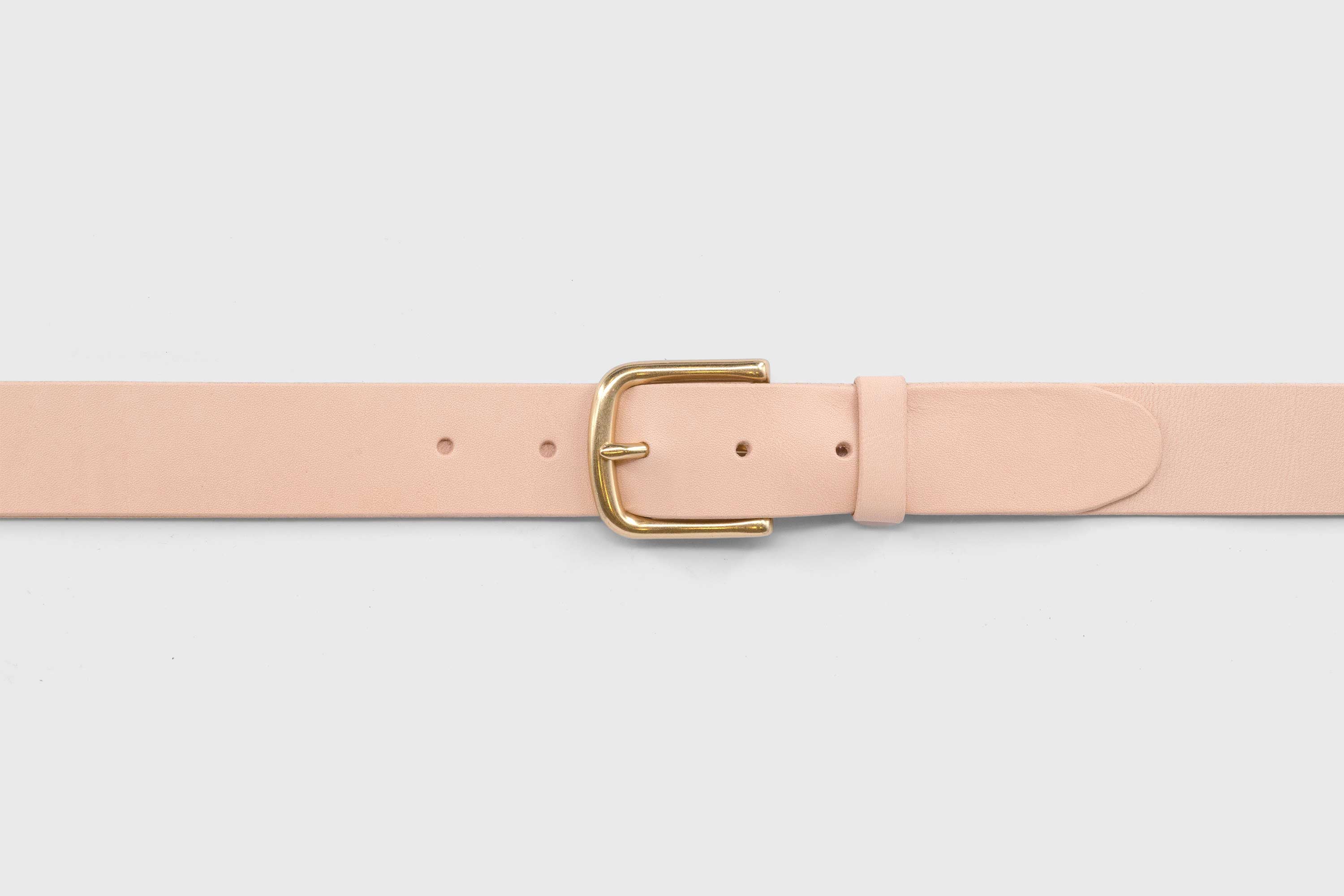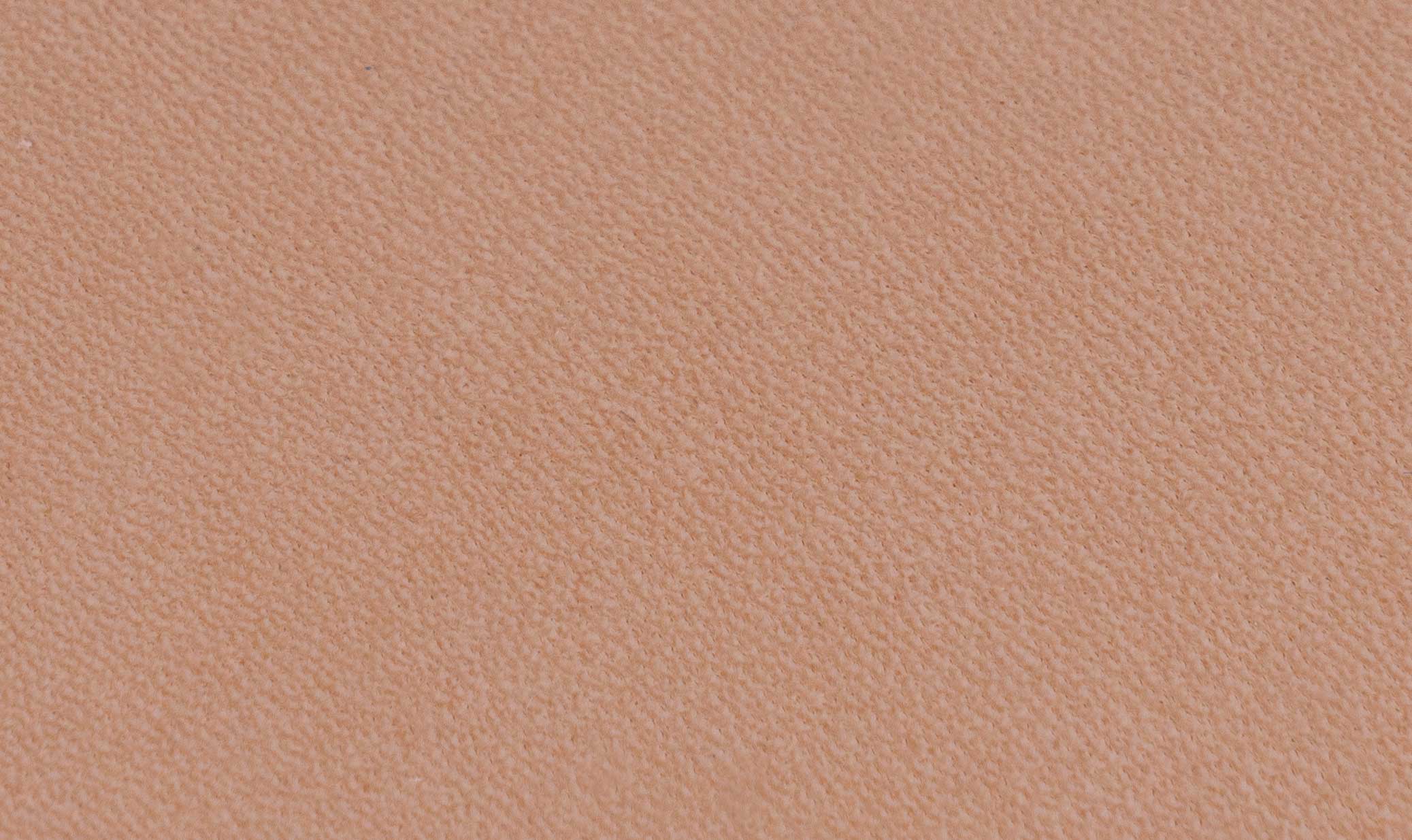
Full Grain Leather: Timeless Elegance and Quality for Bags, Wallets, Belts, and More
What is Full Grain Leather?
Full grain leather is the most authentic, high-quality type of leather you can purchase. It's unadulterated, natural, and reflects the true character of the leather because it hasn't been sanded, buffed, or snuffed to remove marks or imperfections on the surface of the hide. Instead, the grain retains all of the original textures and markings of the natural hide, making each piece of full grain leather truly unique.
Known for its strength and durability, full grain leather also develops a rich patina over time, which enhances the aesthetic appeal of products made from this material. It is commonly used for creating high-end products such as shoes, jackets, belts, and of course, premium bags and accessories like those our company is proud to produce.

The Grain
The term 'grain' refers to the outermost layer of the hide, which has dense, tightly packed fibers. This part of the hide is where the hair follicles were originally located, and it's the toughest part of the hide. The grain is characterized by its unique patterns and markings - no two hides are ever exactly the same. Full grain leather includes this entire outer layer, giving products made from it a natural, unique look.
The Junction
Beneath the grain lies the junction. This is the area where the grain transitions into the corium, or the lower layer of the hide. The junction is a significant part of full grain leather because it is here that the density of the fibers starts to loosen. Full grain leather includes the grain and extends into the junction, but it does not include the corium. This is crucial because it is the dense fibers in the grain and the junction that give full grain leather its renowned strength and durability.
The Split
The split refers to the lower layers of the hide that are 'split' off when the top grain is separated from the hide. This part of the hide has looser fibers and is less durable. It is often used to make suede or corrected grain leather. However, in full grain leather, the split is completely removed during the tanning process to retain only the strongest and most durable part of the hide - the full grain. This is yet another reason why full grain leather products are known for their superior quality and longevity.
Top Grain Leather vs Full Grain Leather
Understanding the differences between full grain and top grain leather can help us appreciate the true value of the products we purchase, and why certain types of leather goods command a higher price tag.
What is Top Grain Leather?
Top grain leather is the second-highest quality of leather after full grain. It's made by splitting a piece of full grain leather and sanding away the surface layer to remove any imperfections or irregularities. After sanding, the leather is often imprinted with a faux grain pattern to give it a more uniform appearance. Top grain leather is more pliable and thinner than full grain, making it a popular choice for goods where a softer feel is desired, like clothing or upholstery.
The Differences: Full Grain vs Top Grain
- Durability and Strength: Full grain leather, as it includes the entire grain and junction, is more robust and durable than top grain. The dense fiber structure in full grain leather means it resists wear and tear better, and can last for decades if properly cared for. On the other hand, the sanding process that top grain leather undergoes weakens the fibers, making it less durable over time.
- Aesthetics and Aging: Full grain leather is known for developing a beautiful patina as it ages, which adds to the charm and character of the product. Every scratch or mark tells a story, making the product uniquely yours. In contrast, top grain leather's surface is coated, which prevents it from developing a patina. However, this also makes it more resistant to stains than full grain leather.
- Authenticity: Full grain leather retains all the natural grain patterns and marks of the hide, adding to its authenticity and unique charm. Top grain leather, however, has its natural surface sanded away and is often imprinted with a faux grain pattern, which makes it lack the unique, authentic characteristics of full grain leather.
- Breathability: Since full grain leather retains its entire grain structure, it has better breathability compared to top grain leather. This makes full grain leather more comfortable for products like shoes and clothing.
- Price: Given its higher quality, durability, and the craftsmanship required to work with it, full grain leather generally commands a higher price than top grain leather.
Suede Leather vs Full Grain Leather
Understanding the characteristics of different types of leather such as suede and full grain leather provides insight into their unique properties, and how they are best used in the production of various leather goods.
What is Suede Leather?
Suede leather is made from the underside of the animal hide, also known as the split layer. This side of the hide has a soft, napped surface that is fuzzy to the touch, which is the primary characteristic of suede. Because it comes from the underside of the hide, suede is less durable and more susceptible to damage from water and stains than full grain or top grain leather. Nevertheless, its soft texture makes it popular for certain applications, such as interior linings, gloves, and delicate accessories.
The Differences: Full Grain vs Suede
- Surface Texture: The most noticeable difference between full grain and suede is the surface texture. Full grain leather has a smooth and somewhat shiny surface, preserving the natural patterns and textures of the animal's skin. Suede, on the other hand, has a soft, napped finish that is velvety to the touch.
- Durability and Strength: Full grain leather is the most durable type of leather because it utilizes the strongest part of the hide. Its tightly packed fibers resist wear and tear, allowing it to maintain its quality for years, if not decades. Suede, however, is less durable due to the looser fiber structure of the split hide, making it more prone to damage and wear over time.
- Water and Stain Resistance: Full grain leather, particularly when treated, is more resistant to water and stains compared to suede. Suede's porous surface tends to absorb liquids and can stain easily, requiring more careful handling and maintenance.
- Breathability: Both full grain and suede are breathable, but the porous nature of suede gives it a slight edge in this respect. However, this also makes it more susceptible to moisture and staining.
- Price: Full grain leather typically commands a higher price point due to its superior durability, longevity, and the skilled craftsmanship required to work with it. Suede, while still a genuine leather product, is generally more affordable due to its lower durability and strength.
- Applications: Full grain leather's durability and aesthetic qualities make it ideal for high-end products like shoes, bags, belts, and jackets. Suede, due to its soft and flexible nature, is often used for items like interior linings, delicate accessories, and upholstery.
Genuine Leather vs Full Grain Leather
While the term "genuine leather" may sound like it's the best quality, in the leather industry, it actually refers to one of the lower grades of leather. Understanding the differences between genuine and full grain leather is crucial when it comes to purchasing and maintaining leather goods.
What is Genuine Leather?
Genuine leather, despite its name, is a term used to describe lower quality leather. It's typically made from the remaining layers of the hide after the top layer has been split off to create top grain or full grain leather. Genuine leather often goes through significant processing, such as sanding and dyeing, to improve its appearance. It may also be coated with a synthetic material to mimic the grain pattern of higher quality leather. Genuine leather is less durable and won't age as well as full grain leather, but it's also significantly more affordable.
The Differences: Full Grain vs Genuine Leather
- Quality and Durability: Full grain leather is the highest quality of leather. It includes the most durable part of the hide and will stand up to years of use, developing a beautiful patina over time. Genuine leather, on the other hand, is made from the less durable inner layers of the hide and won't withstand wear and tear as well.
- Appearance and Aging: Full grain leather retains all the natural grain patterns and markings, which makes each piece unique. It also ages beautifully, developing a rich patina that adds to its character. Genuine leather, however, often has an artificial grain surface, and it won't develop a patina or age as well as full grain leather.
- Processing and Treatment: Full grain leather undergoes less processing, which helps retain its natural characteristics and superior durability. Genuine leather, however, often goes through extensive processing, including sanding and dyeing, and may be coated with synthetic materials to improve its appearance.
- Breathability: Full grain leather has a high degree of breathability compared to genuine leather. The synthetic coating on genuine leather can reduce its breathability.
- Price: Due to its superior quality and durability, full grain leather is more expensive than genuine leather. The affordability of genuine leather, however, makes it a popular choice for budget-friendly leather goods.
- Applications: Full grain leather's durability and aesthetic qualities make it ideal for high-end products such as shoes, bags, belts, and jackets. Genuine leather, due to its lower cost and softer texture, is often used for items like inexpensive bags, shoes, and small leather goods.
Identifying Full Grain Leather
Full grain leather stands apart from other types of leather due to its unique characteristics. It is often chosen for its durability, strength, and natural, unaltered look. But how can you identify full grain leather? Here are a few key things to look for.
Look at the Grain Structure
The grain structure of full grain leather is its most distinctive feature. Unlike other types of leather that have been sanded or buffed, full grain leather retains the entire grain, revealing the hide's natural patterns and markings.
- Natural Imperfections: Look for natural imperfections such as scars, wrinkles, or variations in color. These are not defects but rather marks of authenticity that distinguish full grain leather.
- Unique Grain Patterns: Each piece of full grain leather will have a unique grain pattern, much like fingerprints. If the grain pattern appears too uniform or artificial, it's likely not full grain leather.
- Texture: Full grain leather has a rich, high-quality feel to it. It shouldn't feel overly smooth, plasticky, or synthetic.
Look at the Cross Section
Examining the cross-section of the leather can also provide clues about its quality.
- Fiber Density: Full grain leather includes the densest part of the hide. In the cross-section, this appears as tightly packed fibers. If the fibers look loose or fluffy, it's probably not full grain.
- Consistency: The color and texture should be consistent throughout the thickness of the leather. Any signs of a different color or loose fibers in the middle could indicate that the leather is not full grain.
- No Separate Layers: Full grain leather does not contain separate layers. If you can see a distinct layer or a lining at the back of the leather, it's a sign that it's not full grain.
Remember, full grain leather is not just about aesthetics; it's about quality and longevity. The unique grain structure and the high fiber density seen in the cross section are indicative of the strength and durability that full grain leather offers, making it a wise investment for any leather good.

The Making of Full Grain Leather
Creating full grain leather is a meticulous process that requires careful attention to detail at every stage. Each step, from preparation to tanning and finishing, is vital in producing the high-quality, durable leather we know as full grain.
Preparation
The process of making full grain leather begins with the preparation stage, also known as the beamhouse operations. This involves a series of steps designed to clean the hide and prepare it for tanning.
- Curing: This is the first step, where the raw hides are preserved using salt to prevent bacterial growth and decay.
- Soaking: The cured hides are then soaked in water to clean them and rehydrate any dried parts.
- Liming: The hides are treated with a mixture of lime and water, which helps to remove hair and any remaining flesh from the hide. This also swells the hides, making them easier to split into layers.
- Unhairing and Fleshing: Any remaining hair and flesh are removed from the hide.
- Deliming and Bating: The hide is treated to remove the lime, and enzymes are used to further clean the hide and make it soft and pliable.
- Pickling: The hides are treated with a solution of salt and acid to lower their pH, preparing them for the tanning process.
Tanning
Tanning is a crucial step in the process of making full grain leather. It stabilizes the collagen proteins in the hide, preventing them from rotting, making them resistant to moisture, and keeping them flexible and durable.
- Vegetable Tanning: In the case of vegetable-tanned full grain leather, the hides are soaked in a solution of water and tannins, which are natural compounds derived from plants. This process can take several weeks to months, depending on the desired end result.
- Rinsing and Sorting: After tanning, the hides are rinsed to remove excess tannins, and then sorted based on thickness and quality. Full grain leather comes from the highest quality hides.
Finishing
The finishing stage gives the full grain leather its final appearance and feel.
- Drying: The tanned hides are first dried, which can be done through a variety of methods, including air drying, vacuum drying, or drying in a toggle machine.
- Conditioning: The dried hides are then conditioned with oils to restore their suppleness.
- Finishing Touches: Depending on the desired look and feel of the leather, the hides may then be dyed, waxed, rolled, or given other treatments. However, it's important to note that full grain leather is minimally altered in order to preserve the natural grain of the hide.
- Quality Control: Finally, the leather is inspected for quality and then shipped out for use in various products.
Creating full grain leather is an art that requires skill, patience, and a deep understanding of the properties of animal hides. The result is a high-quality, durable material with a unique beauty and character that only improves with age.

How the Life of the Animal Affects Full Grain Leather
When it comes to full grain leather, the product's quality and characteristics are intrinsically tied to the life of the animal from which the hide is sourced. Since full grain leather is minimally processed and retains the hide's natural surface, the conditions in which the animal lived – including its diet, environment, and overall health – can significantly impact the leather's appearance, durability, and value.
Diet and Health
The health and diet of the animal directly influence the quality of its hide. Animals that are well-fed and healthy generally produce better quality hides, with fewer scratches or scars and a more uniform thickness. This results in a stronger, more durable full grain leather with a more consistent appearance. Conversely, malnourished or sick animals may have hides that are thinner or exhibit irregularities, which can affect the quality of the full grain leather produced.
Environment and Climate
The environment in which the animal lived can also leave its mark on the hide. For instance, animals living in harsh climates with extreme temperatures may have hides that show signs of weathering. Similarly, if the animal lived in an environment with lots of insects, the hide might bear the marks of insect bites.
Furthermore, animals raised in environments where they have plenty of space to move around tend to produce better quality hides than those raised in confined spaces. This is because the constant movement helps to develop a strong, flexible hide, whereas confinement can lead to pressure marks or other deformities in the hide.
Handling and Care
The way the animal is handled throughout its life can also affect the quality of the hide. Animals that are poorly handled or subjected to rough treatment may have more scars, scratches, or other defects on their hides, which will be evident in the full grain leather.
The Impact on Full Grain Leather
All these factors contribute to the unique characteristics of each piece of full grain leather. The natural imperfections and markings are part of what gives full grain leather its charm and authenticity. However, they can also pose challenges in terms of consistency, requiring skilled craftsmanship to work with the material and highlight its natural beauty.
Moreover, this close link between the animal's life and the quality of the leather highlights the importance of ethical and sustainable farming practices. By ensuring that animals are well-cared for, fed a proper diet, and given a good environment to live in, we can not only improve animal welfare but also produce higher quality full grain leather that is more durable, beautiful, and valued by consumers.

Why is Full Grain Leather More Expensive?
Full grain leather is often considered the pinnacle of quality in the leather industry, and its price reflects this. There are several factors that contribute to the higher cost of full grain leather compared to other types of leather.
- Quality of Raw Material: Full grain leather is made from the highest quality hides, specifically the top layer of the skin which is the strongest and most durable. These high-quality hides are rarer and thus more expensive.
- Production Process: The process of making full grain leather is meticulous and time-consuming, particularly in the case of vegetable tanning. This traditional method of tanning can take up to two months to complete. The extended time and labor involved in its production add to the cost.
- Minimal Alteration: Full grain leather is left nearly intact with very little alteration to its surface. This means that only the best quality hides, without significant scars or blemishes, can be used. The need for high-quality raw materials without major defects drives up the price.
- Durability and Longevity: Full grain leather is extremely durable and ages beautifully, developing a rich patina over time. It's an investment that can last for years, if not decades, with proper care. This longevity and durability factor into its higher cost.
- Demand and Supply: The demand for full grain leather often exceeds the supply, as only a small portion of a hide can be used to make full grain leather. This imbalance also contributes to the higher price.
- Craftsmanship: Working with full grain leather requires a high degree of craftsmanship and skill. It's less forgiving than other types of leather, and each piece needs to be carefully selected and crafted to highlight its unique characteristics. This level of craftsmanship is a significant factor in the cost.
While full grain leather may be more expensive upfront, its superior durability and timeless look make it a cost-effective choice in the long run, particularly for items like footwear, furniture, and high-quality bags and accessories.
Our Full Grain Leather Sources: Tuscany, Italy, and Igualada, Spain
At our company, we take immense pride in sourcing our full grain leather from two world-renowned regions with a rich history in leather tanning - Tuscany in Italy and Igualada in Spain. These regions have been at the forefront of the leather industry for centuries, providing us with high-quality, beautifully crafted leather that sets our products apart.
Tuscany, Italy
Located in the heart of Italy, Tuscany is renowned worldwide for its exceptional leather. The region's history of leather tanning can be traced back to the Middle Ages when the Arno river provided an abundant water supply needed for the tanning process. The Tuscan city of Florence, in particular, has been a hub of leather craftsmanship since the 13th century and remains a global benchmark for quality and craftsmanship.
Tuscan tanneries are known for their traditional methods, including vegetable tanning, a process that uses organic materials and takes a considerable amount of time and skill. This method results in full grain leather with a rich color, distinct aroma, and high durability. The Tuscan leather artisans' deep respect for tradition, coupled with their commitment to quality, ensures that the full grain leather we source from this region is of the highest standard.
Igualada, Spain
Igualada is another region steeped in a rich history of leather tanning. Located in Catalonia, it has been a center for leather production since the 10th century. Its strategic location near a river and plentiful local resources made it a prime location for tanneries.
Igualada became particularly renowned for its high-quality leather during the Industrial Revolution, with advancements in technology allowing for increased production without compromising the leather's quality. Today, Igualada continues to be a hub for leather production, marrying traditional techniques with modern innovation.
The full grain leather we source from Igualada is meticulously crafted, displaying the exceptional skill and expertise of the region's leather artisans. It's characterized by its superior durability, beautiful finish, and the unique character that comes from centuries of tanning tradition.
By sourcing our full grain leather from Tuscany and Igualada, we ensure that our products are not just well-crafted, but also carry the legacy and tradition of two of the world's most revered leather crafting regions. This commitment to quality and authenticity sets our products apart, offering our customers bags and accessories that are truly timeless.

The Aging of Full Grain Leather: The Beauty of Patina
One of the defining characteristics of full grain leather is the way it ages. Unlike other materials that deteriorate and weaken over time, full grain leather becomes more beautiful and unique as it ages, thanks to a process known as developing a patina.
What is Patina?
Patina refers to the soft sheen that develops on the surface of the leather over time due to natural aging, exposure to sunlight, oils, and regular use. It's not something that can be artificially replicated or hurried; it's a testament to the life of the product, a visual diary of its use.
The patina is what gives aged full grain leather its unique character. It enhances the natural beauty and uniqueness of the leather, with the color deepening and becoming more complex over time. The areas that receive the most use will darken faster, creating a multi-toned effect that is incredibly appealing.
How Does Full Grain Leather Age?
Full grain leather ages gracefully, becoming better with time. Here's how it happens:
- Absorption of Oils: Full grain leather will absorb oils from your hands or any other source of oil it comes into contact with. This absorption causes the leather to darken and soften over time.
- Exposure to Sunlight: When exposed to sunlight, full grain leather will undergo a natural darkening process, similar to a suntan. This gives the leather a warm, rich tone.
- Wear and Use: The more you use a full grain leather product, the more it adapts to its usage. It will start showing creases and wear marks, each of which tells a story and adds to its character.
- Maintenance: Regular cleaning and conditioning help keep full grain leather in optimal condition, enhancing its ability to develop a beautiful patina.
The result of this aging process is a piece of full grain leather that is truly unique, reflecting its journey through time. Its beauty lies in its evolution, with each mark, scratch, and shift in color adding to its character.
In conclusion, full grain leather doesn't just age - it matures. With proper care, a product made from full grain leather can last a lifetime, growing more beautiful and distinctive with each passing year. It's an investment in quality and style that stands the test of time.
The Longevity of Full Grain Leather: A Testament to Durability
Full grain leather is often regarded as the epitome of durability in the world of leathers. Its lifespan is significantly longer than other types of leather, making it a popular choice for products that are designed to last.
How Long Does Full Grain Leather Last?
When properly cared for, full grain leather can last several decades, and in some cases, even a lifetime. While the exact lifespan can vary depending on factors such as usage and maintenance, it's not uncommon for full grain leather goods like bags, belts, wallets, and furniture to be passed down through generations as heirlooms.
The Durability of Full Grain Leather
The remarkable durability of full grain leather can be attributed to its structure and the minimal processing it undergoes.
- Strong Structure: Full grain leather is made from the outermost layer of the animal hide, which is the densest and strongest part. The tightly interwoven fibers in this layer give the leather its exceptional strength and durability.
- Minimal Processing: Unlike other types of leather, full grain leather retains the entire grain, with minimal alterations to its surface. This means it retains all of the natural toughness and resilience of the hide.
- Resistance to Damage: Full grain leather is more resistant to moisture, dirt, and damage compared to other types of leather. It doesn't crack or peel, and any scratches or scuffs it picks up over time tend to blend into the patina, adding to its character rather than detracting from its appearance.
- Improved with Age: One of the unique characteristics of full grain leather is that it improves with age. It develops a beautiful patina over time, which not only enhances its appearance but also acts as a protective layer, contributing to its longevity.
In conclusion, the longevity and durability of full grain leather make it an excellent choice for those seeking products that offer superior quality and timeless appeal. With the right care, your full grain leather products can be more than just possessions; they can become companions in your journey, carrying your stories and memories across years and even generations.
Maintaining Full Grain Leather: A Guide to Preservation
Full grain leather is a durable and resilient material that, with proper care, can last for several decades. Here's how to maintain full grain leather and ensure its longevity:
Avoid Moisture
While full grain leather can resist small amounts of water, prolonged exposure to moisture can damage the leather. Here's how to protect it:
- Wipe Spills Immediately: If your leather item gets wet, blot the water out immediately with a soft, dry cloth. Avoid rubbing as it can push the water deeper into the leather.
- Dry Naturally: If the leather gets significantly wet, let it dry naturally. Avoid using a heat source like a hairdryer as it can dry out the leather and cause it to crack.
- Use a Leather Protectant: Consider using a leather protectant spray to provide a water-resistant layer.
Avoid Heat and Direct Sun
Heat and sunlight can cause full grain leather to dry out, fade, and crack. Here's how to protect your leather items:
- Store Properly: Store your leather items in a cool, dry place out of direct sunlight. If you're storing it for a long period, make sure the storage area is well-ventilated to prevent mold and mildew.
- Avoid Heat Sources: Don't place leather items near heat sources like radiators or heaters. The heat can dry out the leather and cause it to crack.
Avoid Scratches
While minor scratches can add character to full grain leather and blend into the patina over time, severe scratches can be damaging. Here's how to prevent and handle scratches:
- Handle with Care: Be mindful when using or carrying your leather items to avoid contact with sharp objects.
- Use a Leather Conditioner: Regularly applying a leather conditioner can help keep the leather supple and more resistant to scratches.
- Repair Scratches Promptly: If your leather item gets a deep scratch, consider getting it repaired by a professional to prevent further damage.
Remember, full grain leather is a natural product that changes and matures over time. Regular care and maintenance will ensure that your full grain leather items age beautifully, developing a unique patina that enhances their character and appeal.
Other factors influencing the quality of leather
- Type of Animal: The species and breed of the animal can significantly influence the leather's quality. For instance, cowhide is generally considered more durable and versatile compared to pigskin.
- Age of Animal: The age of the animal at the time of hide collection can also affect the quality. Younger animals typically have softer, more supple hides, while older animals tend to have tougher, more durable hides.
- Tanning Process: The method used to tan the hide plays a crucial role in the final product's quality. Vegetable tanning and chrome tanning each have their own distinct outcomes in terms of durability, suppleness, and color.
- Dyeing Process: The quality of dyes used and the dyeing process can affect the leather's color fastness and resistance to fading.
- Finish: The finish applied to the leather can influence its durability, resistance to staining and water, and overall appearance.
- Grain Quality: The quality of the grain, which is the outermost layer of the hide, is a significant factor. Full grain leather, which includes the entire grain, is generally considered the highest quality.
- Leather Thickness: The thickness of the leather can affect its durability and suitability for various applications. Thicker leather is typically more durable but less flexible.
- Leather's Origin: The geographical origin of the leather can play a role in its quality. This is due to factors like regional animal breeds, local tanning practices, and climate conditions.
Remember, the best quality leather for a specific product often depends on the product's intended use. For example, while full grain leather's durability makes it ideal for products like boots or belts, its relative stiffness might make it less suitable for items like gloves that require more flexibility.
Advantages and Disadvantages of Full Grain Leather
Full grain leather is highly regarded for its quality and durability, but like all materials, it has its pros and cons.
Advantages of Full Grain Leather
- Durability: Full grain leather is extremely durable and resistant to wear and tear, making it ideal for products that are used regularly.
- Longevity: With proper care, full grain leather can last for several decades, and often improves with age.
- Aesthetics: The natural grain and markings make full grain leather visually appealing, and it develops a beautiful patina over time.
- Strength: The tight, dense fiber structure in the top layer of the hide makes full grain leather strong and resilient.
- Breathability: Full grain leather is more breathable than other types of leather, which can make it more comfortable for items like shoes or clothing.
Disadvantages of Full Grain Leather
- Price: Full grain leather is more expensive than other types of leather due to its quality and the complex process required to produce it.
- Weight: Full grain leather can be heavier than other types of leather, which might make it less suitable for certain applications.
- Inconsistency: The natural variations in the hide can lead to inconsistencies in color and texture. While many people find this adds to the leather's charm, others may prefer a more uniform appearance.
- Maintenance: Full grain leather requires regular care to keep it in good condition, including cleaning and conditioning.
- Sensitivity to Conditions: Full grain leather can be sensitive to harsh conditions, such as prolonged exposure to sunlight or water, which can cause it to fade, dry out, or crack.
In conclusion, while full grain leather has some potential drawbacks, its numerous advantages make it a highly desirable material for a wide range of products, from luxury goods to everyday items. Its timeless appeal, durability, and unique aging process often make it a worthwhile investment.

Is Full Grain Leather Waterproof?
While full grain leather has a degree of natural resistance to water, it's essential to clarify that it is not entirely waterproof.
The dense structure of full grain leather does provide some protection against moisture, allowing small amounts of water to bead up and roll off rather than soaking in immediately. This means that if you're caught in a light drizzle, your full grain leather bag or shoes are unlikely to be damaged, provided you wipe them dry as soon as possible.
However, prolonged or heavy exposure to water can be detrimental to full grain leather. If the leather is soaked through, the water can disrupt the natural oils in the material, potentially leading to drying, cracking, or staining.
Furthermore, if full grain leather is not allowed to dry properly after getting wet, it can develop mold or mildew. Therefore, if your full grain leather item does get wet, it's important to let it dry naturally in a well-ventilated area.
To enhance the water resistance of full grain leather, you can use a leather protectant spray. These sprays create a protective layer on the surface of the leather, helping to repel water. However, they should be used sparingly and as per the instructions to avoid altering the leather's appearance or breathability.
In summary, while full grain leather has some natural water resistance, it's not waterproof and should not be exposed to heavy or prolonged wet conditions. With proper care, however, full grain leather can withstand occasional encounters with water without suffering damage.
Vegan Alternatives and Full Grain Leather
When it comes to finding vegan alternatives to full grain leather, the search continues. It's essential to understand that many of the currently available "vegan leathers" are not comparable to full grain leather, particularly when it comes to the unique qualities and environmental impact.
Most widely available vegan leathers are actually made from a variety of plastic materials, predominantly PVC (Polyvinyl Chloride) or PU (Polyurethane). While these materials can be made to mimic the look and feel of leather to some extent, they lack the breathability, durability, and unique aging properties of full grain leather. Furthermore, these plastic-based materials do not biodegrade and their production and disposal can have significant environmental impacts.
In the quest for truly sustainable and cruelty-free alternatives, some promising materials are being developed from plant and other natural sources, such as mushrooms, pineapple leaves, and apple peels. However, these innovations are still in their early stages, and while they offer exciting potential, they have not yet reached a point where they can fully replicate the specific qualities of full grain, vegetable-tanned leather.
In summary, while vegan alternatives to leather continue to evolve and improve, a comparable substitute for full grain vegetable-tanned leather has yet to be found. The unique combination of durability, breathability, and the ability to develop a beautiful patina over time makes full grain leather a uniquely valuable material.
Full Grain vs. Corrected Grain Leather: Unraveling the Intricacies
The terms "full grain" and "corrected grain" are frequently employed in the leather industry, often leading to the belief that they represent entirely separate categories. However, the relationship between these two is not as straightforward as it might seem.
Full Grain Leather
Full grain leather, heralded as the highest quality of leather, refers to the outermost layer of the animal hide, encompassing the complete, natural grain pattern. Esteemed for its superior durability, breathability, and the unique patina it develops over time, full grain leather is the material of choice for many high-end products.
Corrected Grain Leather
Corrected grain leather, on the other hand, has been processed to modify its surface. This process could involve a range of techniques that aim to minimize or hide imperfections such as scars, insect bites, or uneven coloration. These techniques might include buffing, sanding, the application of color, or the addition of a finishing layer.
To achieve a more uniform appearance, a new grain pattern may be embossed onto the surface of the leather. This embossing can occur after the application of a finish, helping to conceal any remaining imperfections and providing a consistent, smooth texture. However, this process might compromise some of the natural character and possibly the durability of the leather.
The Intersection: Full Grain with Corrected Grain
This brings us to a common misunderstanding: full grain leather can indeed be "corrected". This correction does not always involve heavy buffing or sanding, but often includes the careful application of color or a finishing layer.
This correction process can enhance the uniformity of color and appearance while maintaining the inherent strength and quality of full grain leather. However, it's essential to understand that the more correction a piece of full grain leather undergoes, the more it might lose some of the unique benefits of full grain, such as its distinctive natural grain pattern and aging process.
In conclusion, although full grain and corrected grain leather are often perceived as different in terms of quality and processing, there is a degree of overlap between them. Being aware of these nuances is crucial when selecting leather products, to ensure you make an informed choice about the quality and characteristics of the leather you're investing in.

Full Grain Leather Wallets: A Mark of Quality and Durability
A wallet is more than just a functional item. It's an accessory that you use every day, a companion that goes everywhere with you. It holds your most important cards and hard-earned cash, so it's important that it's built to last. That's where full grain leather wallets shine.
Full grain leather is the highest quality leather available. It's crafted from the outermost layer of the animal hide, preserving the natural grain pattern. The result is a wallet that's not only strong and durable, but also has a unique character that only improves with time.
Unlike other types of leather that can wear out, full grain leather develops a beautiful patina as it ages, adding to its charm and appeal. It's resistant to moisture and can withstand the rigors of daily use without losing its shape or structure.
When you choose a full grain leather wallet, you're investing in a product that combines timeless style with enduring quality. It's a piece that you can trust to securely hold your valuables today, tomorrow, and for years to come.
At our store, we specialize in creating exceptional full grain leather wallets. Each piece is carefully crafted with attention to detail, ensuring that you get a product that's as reliable as it is attractive. We source our full grain leather from the renowned Tuscan region and Igualada, areas known for their rich history in leather tanning. This way, we can guarantee that you're getting the very best.
Discover the difference that full grain leather can make. Explore our range of full grain leather wallets here.

The Exquisite Elegance of Full Grain Leather Bags
In the realm of fashion accessories, a bag isn't just a means of carrying your essentials. It's an expression of your style, a statement of your taste, and a testament to your appreciation of quality. For those who value longevity and timeless elegance, full grain leather bags are the ultimate choice.
Full grain leather represents the pinnacle of leather quality. Derived from the topmost layer of the animal hide, it retains the complete natural grain pattern. This imparts each full grain leather bag with a unique character, strength, and durability that is second to none.
Unlike other leather types that may deteriorate over time, full grain leather improves with age, developing a rich patina that enhances its beauty and charm. It's resilient to moisture and wear, ensuring your bag maintains its integrity and style through the demands of daily use.
Choosing a full grain leather bag is an investment in lasting quality and timeless style. It's a statement piece that will accompany you on your journey, becoming more beautiful with each passing day.
At our store, we take pride in crafting exceptional full grain leather bags. Each piece is meticulously designed with keen attention to detail, promising a product that is as reliable as it is stylish. Our full grain leather is sourced from the renowned Tuscan region and Igualada, areas with a rich history in leather tanning, assuring that you're receiving nothing but the best.
Experience the unique allure of full grain leather. Browse through our collection of full grain leather bags here.

Full Grain Leather Belts: A Blend of Functionality and Elegance
In the world of fashion and style, a belt is more than just a practical accessory. It's a key element that brings your outfit together, a testament to your personal style, and when made from full grain leather, it is a symbol of quality and durability.
Full grain leather is the top tier of leather, retaining the complete natural grain from the outermost layer of the animal hide. This results in a belt that not only has exceptional strength and longevity, but also boasts a distinct character that grows more attractive over time.
Unlike other types of leather that can degrade with time, full grain leather belts develop a beautiful patina that enhances their aesthetic appeal. They are resilient to wear and tear, maintaining their shape and function through years of use, making them a timeless accessory.
Investing in a full grain leather belt means choosing a product that seamlessly blends practicality with timeless elegance. It's an accessory that you can rely on to add a sophisticated touch to your outfit today, and for many years to come.
At our store, we specialize in creating premium full grain leather belts. Each belt is carefully crafted, with meticulous attention to detail, promising a product that is both durable and stylish. We source our full grain leather from the respected Tuscan region and Igualada, both of which have a rich tradition in leather tanning, assuring you of the very best quality.
Experience the unique charm and durability of full grain leather. Explore our selection of full grain leather belts here.

Full Grain Leather Laptop Sleeves: Style Meets Protection
In the modern world where technology is an integral part of our lives, the way we carry and protect our devices speaks volumes about our personal style and preferences. For those who value both function and fashion, full grain leather laptop sleeves are the perfect choice.
Full grain leather, the highest quality of leather, is made from the outermost layer of the animal hide and retains the full natural grain. This gives each laptop sleeve a unique character and unmatched strength and durability.
Unlike lower quality leathers that might deteriorate, full grain leather ages gracefully, developing a rich patina that enhances its beauty. It's resistant to wear and tear, ensuring your laptop sleeve retains its elegance even with daily use.
Investing in a full grain leather laptop sleeve means choosing a product that protects your valuable device while adding a touch of sophistication to your look. It's an accessory that blends practicality with timeless elegance, making it the perfect companion for your laptop.
At our store, we craft exceptional full grain leather laptop sleeves with attention to detail, offering a product that is as stylish as it is protective. Our leather is sourced from the respected regions of Tuscany and Igualada, known for their rich history in leather tanning, ensuring that you're getting the best quality.
Experience the blend of style, protection, and durability with our full grain leather laptop sleeves. Explore our range here.


